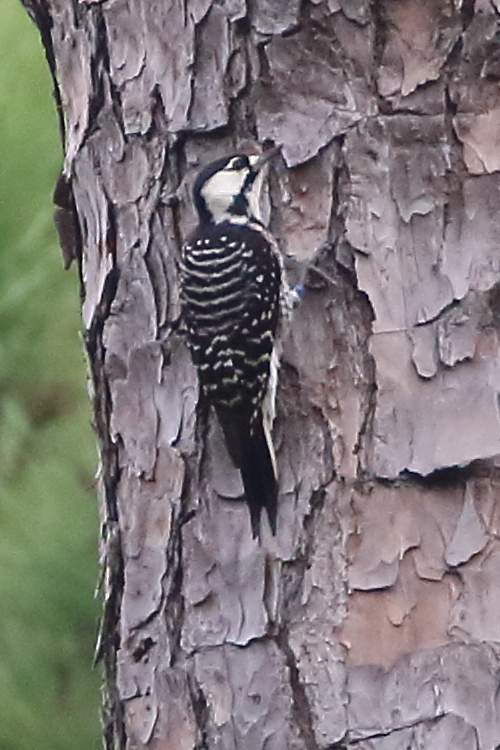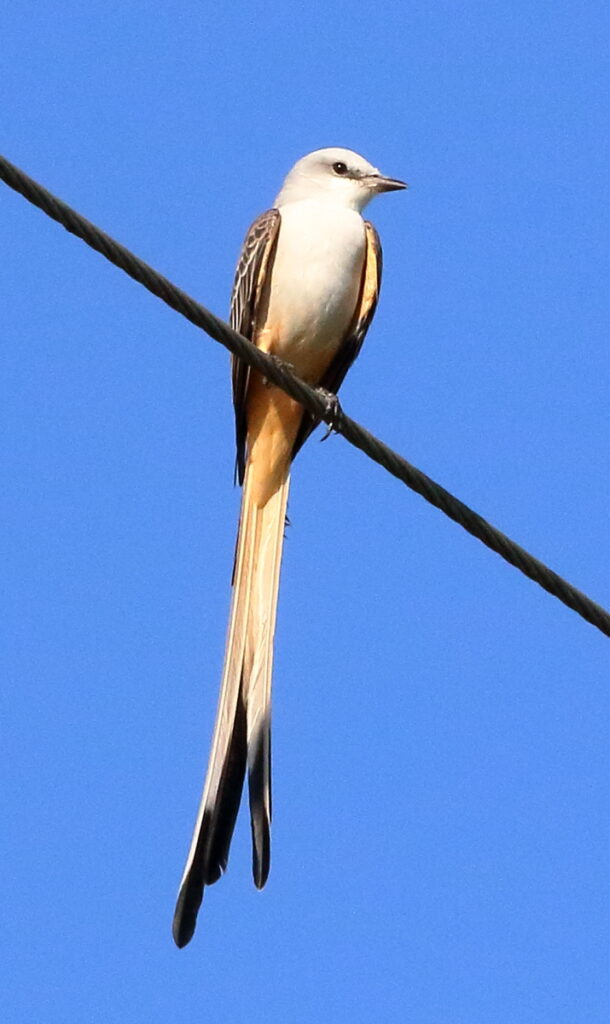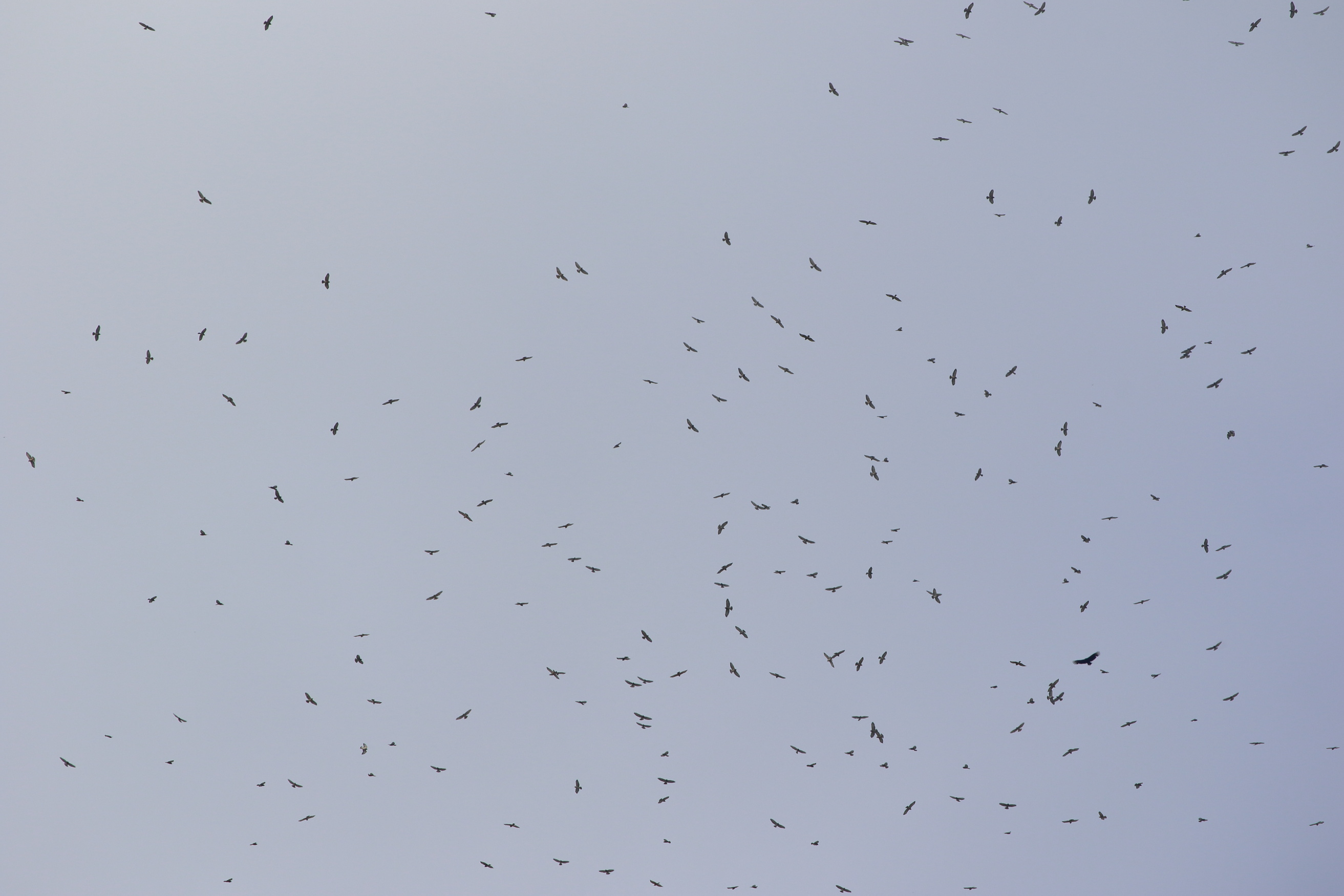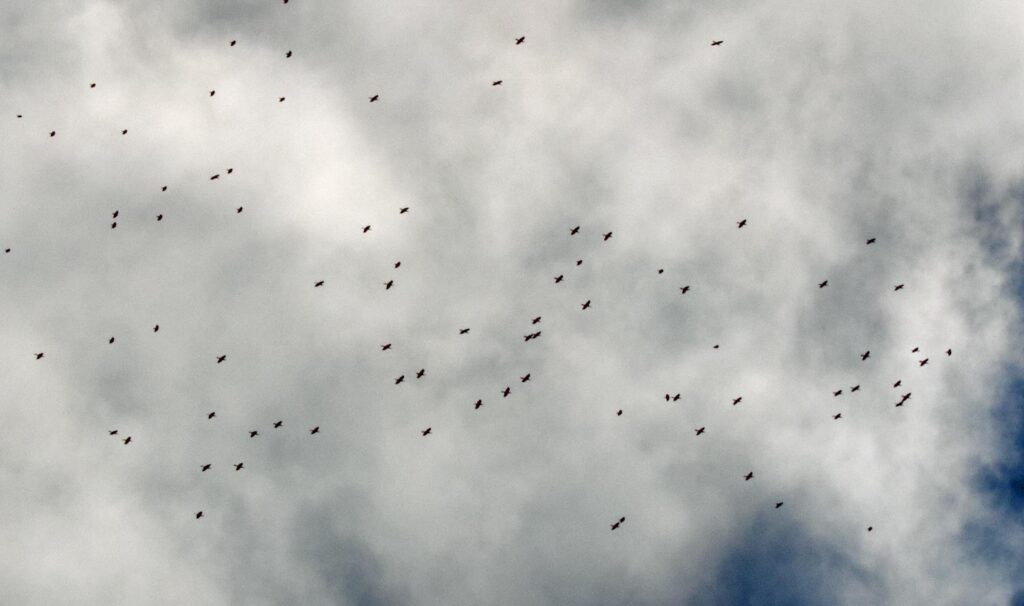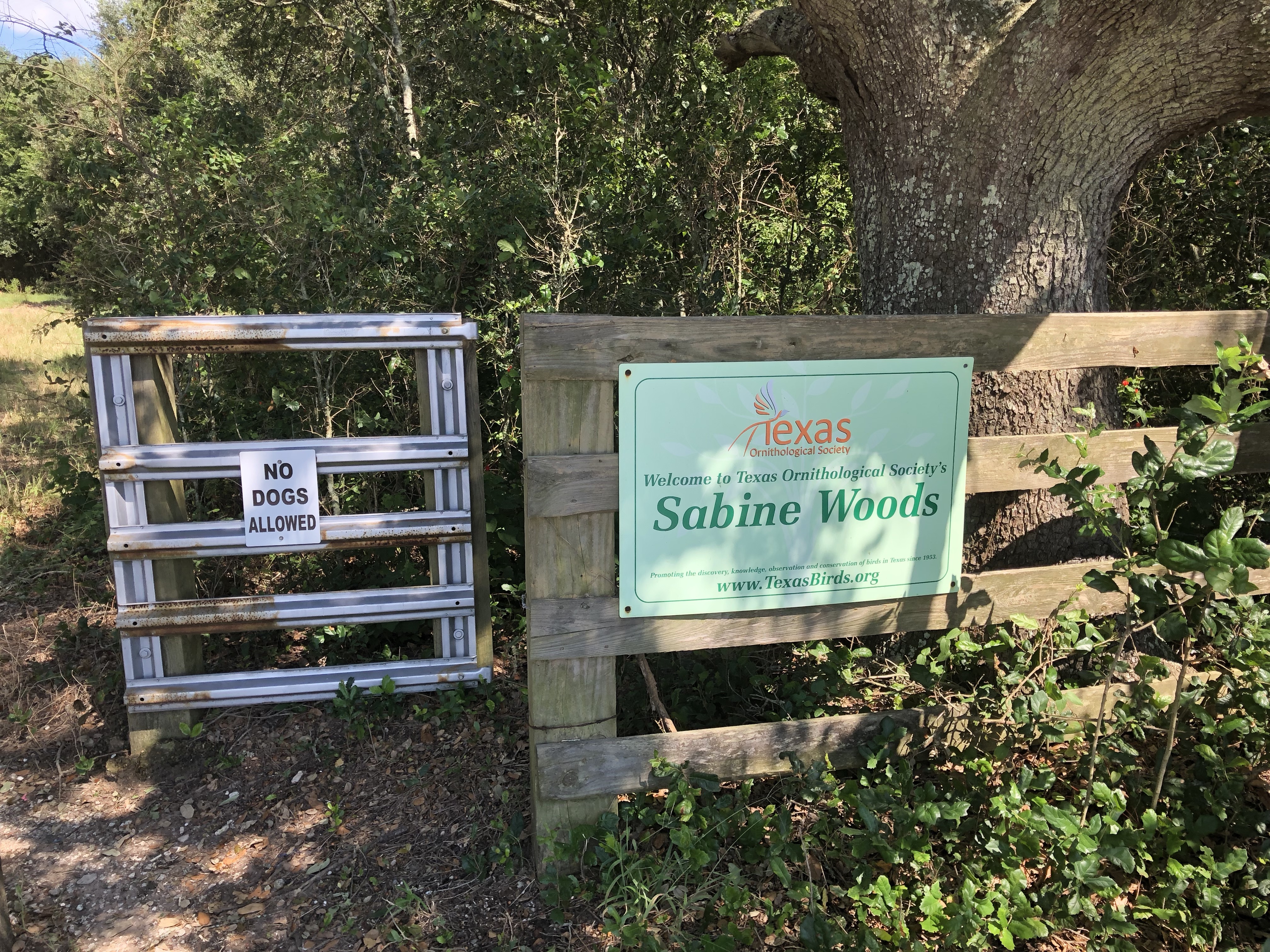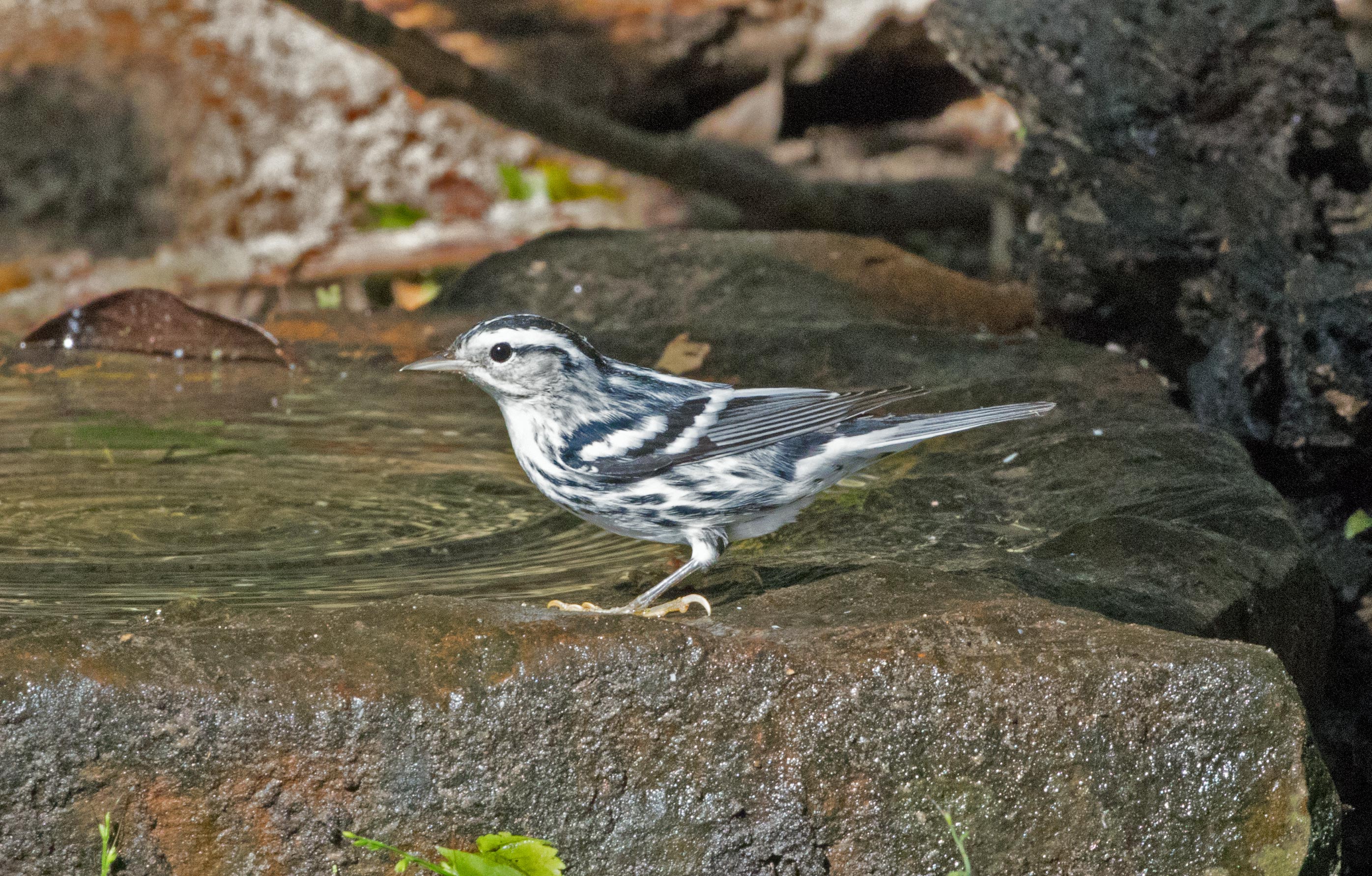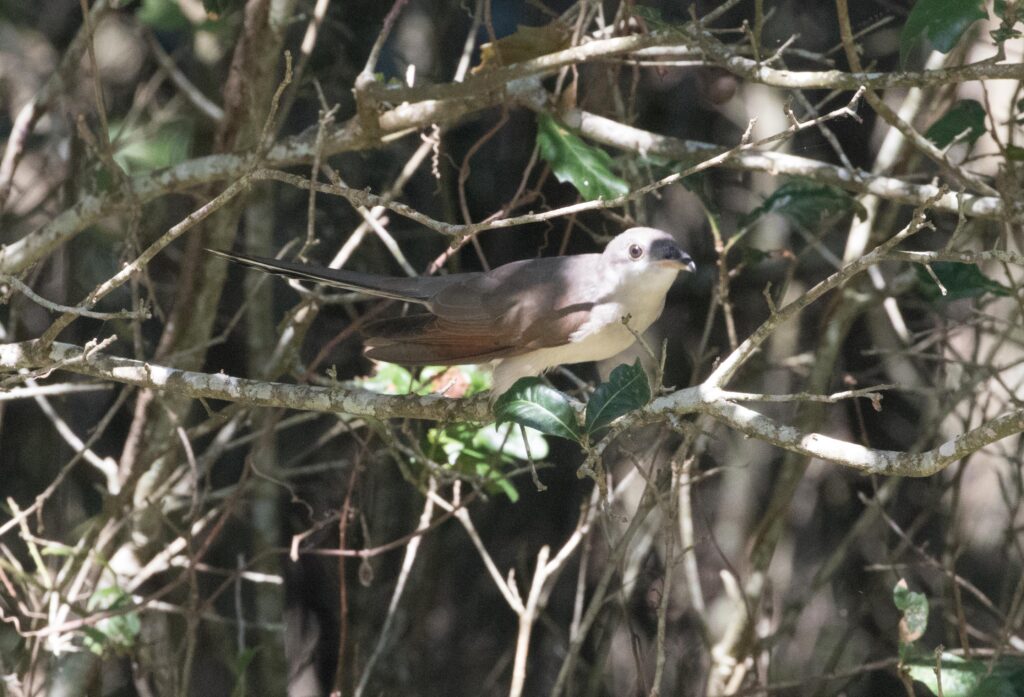Enjoy these posts? Why not subscribe in the box down and to the right?
If you’ve been a loyal fan of FatherSonBirding, you probably know about Braden’s and my 2016 Big Year in which we saw 337 species in the American Birding Association (ABA) region in a calendar year. Since then, we have never set out to topple that record even though, with our vastly improved birding skills and knowledge, it would be a relatively easy thing to do. In fact, a couple of times we have come perilously close without really trying thanks to trips to Texas, California, and in Braden’s case, a band trip to Hawaii. When I received two invitations to Texas for this fall, however, I thought to myself “You know, maybe it’s time to give this a shot.”
Mind you, it was still a long shot. When I left for The Hummerbird Celebration in September I had managed to scrape together only about 260 species in Montana, Idaho, and Washington for the year, and knew I’d have to go BIG that first trip to Texas. I did, scoring about fifty Year Birds—but still left myself more than 20 birds short in perhaps the toughest time of year to bird. “Still,” I thought, “if I can somehow get ten or twelve more species on my second Texas trip, I might get within striking distance.”
I knew I would need help.
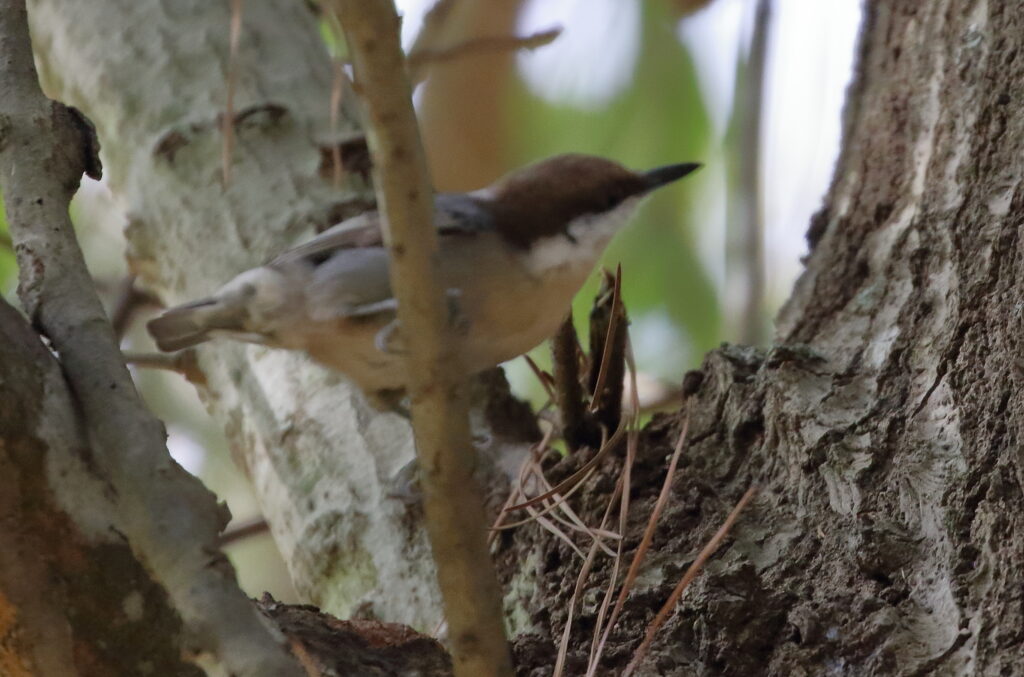
My trip last week unfolded when I was invited to give a keynote address at Houston Audubon’s (HAS) annual Avian Affair fundraising gala (more on that in my next post). As you probably know I love HAS and was honored to accept, but I brazenly asked my hosts if there was a chance anyone could take me birding when I arrived. Before I knew it, a team of expert birders, all HAS board members, had been assembled with the express goal of helping me tackle my Texas “needs” list! In fact, within twenty minutes of my arrival, Bill Matthews picked me up at the airport and whisked me off to our first stop, the W.G. Jones State Forest—home to some of the state’s most accessible Red-cockaded Woodpeckers.
To be honest, I didn’t think we’d find the RCWOs since they can forage over a large area, but I was also hoping for a Life Bird, Brown-headed Nuthatch. As we began walking around the forest, we found no woodpeckers near their roosting trees, so decided to take a longer walk down a trail. Very little stirred, leaving me feeling that maybe we wouldn’t see much—until, that is, we had walked about half a mile. Then, all of a sudden, Eastern Bluebirds were flying everywhere. Other Year Birds soon surrounded us—Carolina Chickadees, a Yellow-bellied Sapsucker, Tufted Titmice, Pine Warblers, and oh joy, Brown-headed Nuthatches!
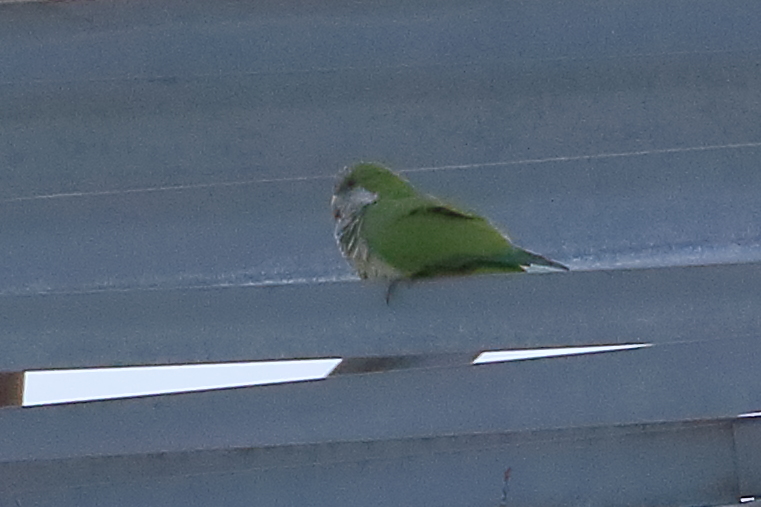
We left without RCWOs, but I was elated with our finds. Bill hadn’t finished with me, though, as we stopped by a roosting Eastern Screech-Owl in a neighborhood nesting box and two Monk Parakeets behind his wife’s studio. By this time, Bill’s fellow board member and well-known bird guide Glenn Olsen joined us, so after the parakeets, we adjourned to Molina’s Cantina for some great Tex-Mex food and to plan our next day’s conquests. Unfortunately, the next day proved a lot tougher than the first, but we still were able to hear a Limpkin—a rare visitor to Texas—at Sheldon Lake, and see some incredibly cool Brown Boobies on a “tower of power” at Baytown Nature Center, accompanied by yet another great birder and HAS board member, Skip Almoney.
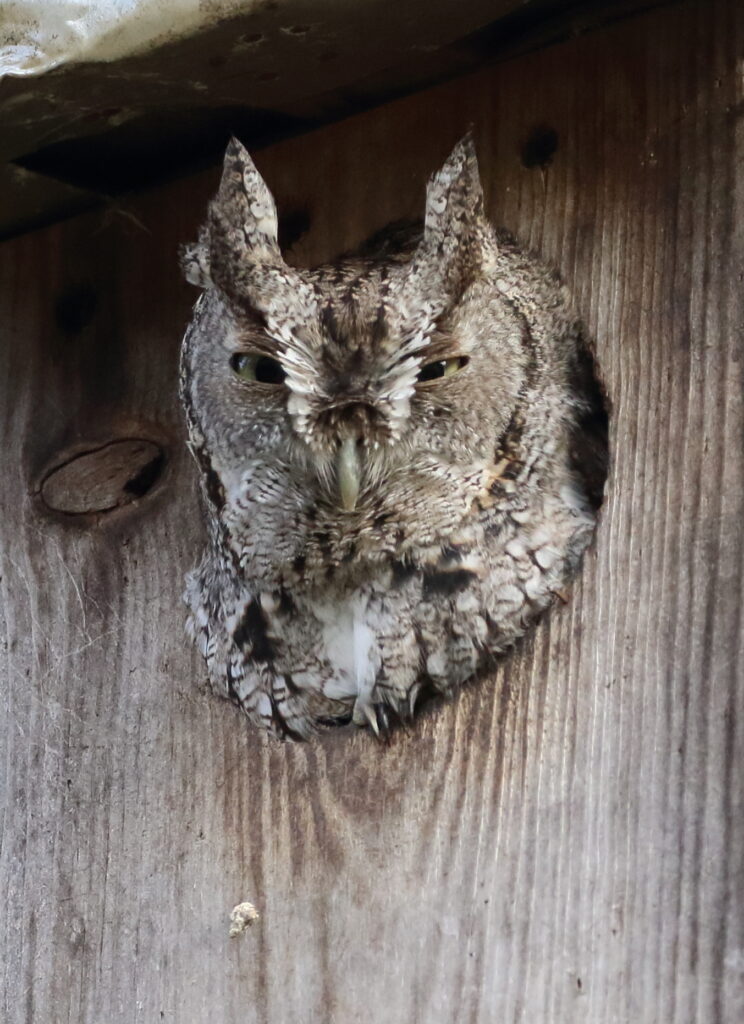
With a total of 8 Year Birds, I was fairly satisfied as I actually did some work the following day, speaking to fifth-graders at Western Academy—and saw Year Bird #9, Scaly-breasted Munias! Glenn Olsen was not satisfied, however, so on my last morning, he picked me up early before my flight and we headed back out to W.G. Jones, meeting up with another great HAS board member, Eric Mayer, out at the site. Again, I didn’t think we’d see the woodpeckers and we didn’t. After an hour, in fact, it was time to head back to the car so Glenn could take me to the airport. As we approached the parking area, though, Glenn shouted, “Woodpecker!” I got my binoculars on a black-and-white bird landing on a pine tree and guess what? Red-cockaded Woodpecker! It was a great way to finish up a great trip, and left me with a flock of wonderful new friends—and only 11 birds to break my record. Will I make it? Good question. While in Texas, I missed four or five migrating rarities in Montana and it appears they have left the state. I will keep up my quest, however, so stay tuned!
